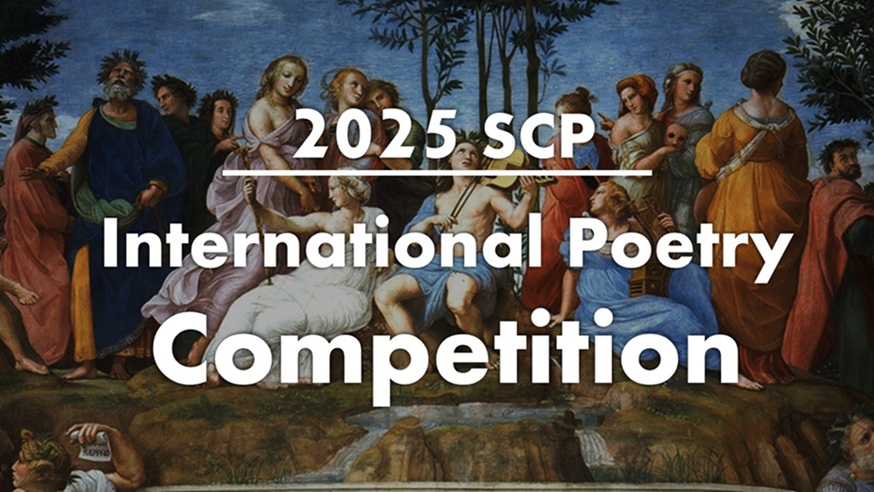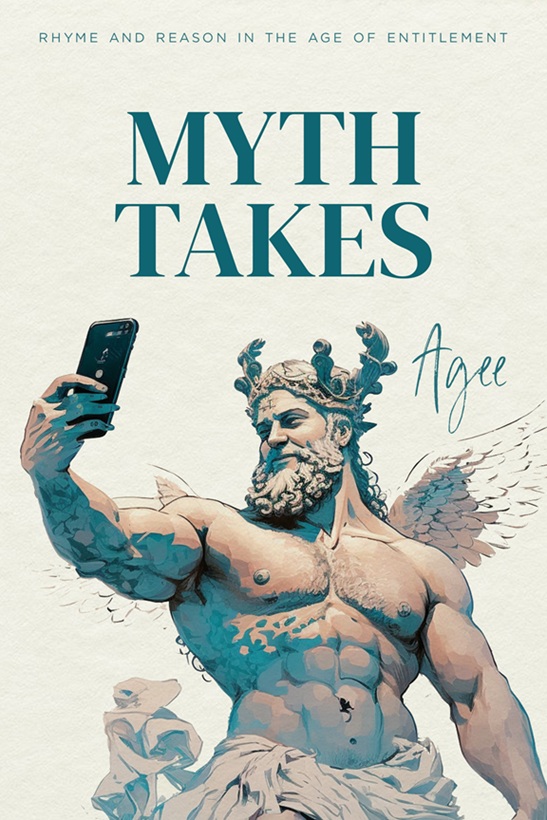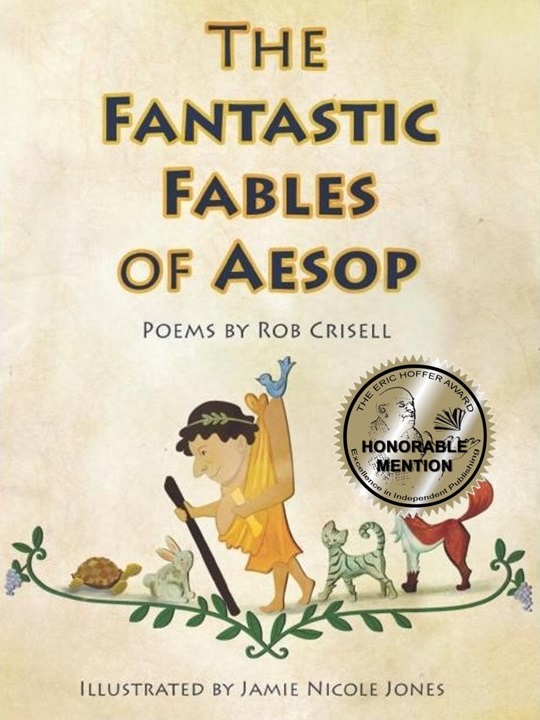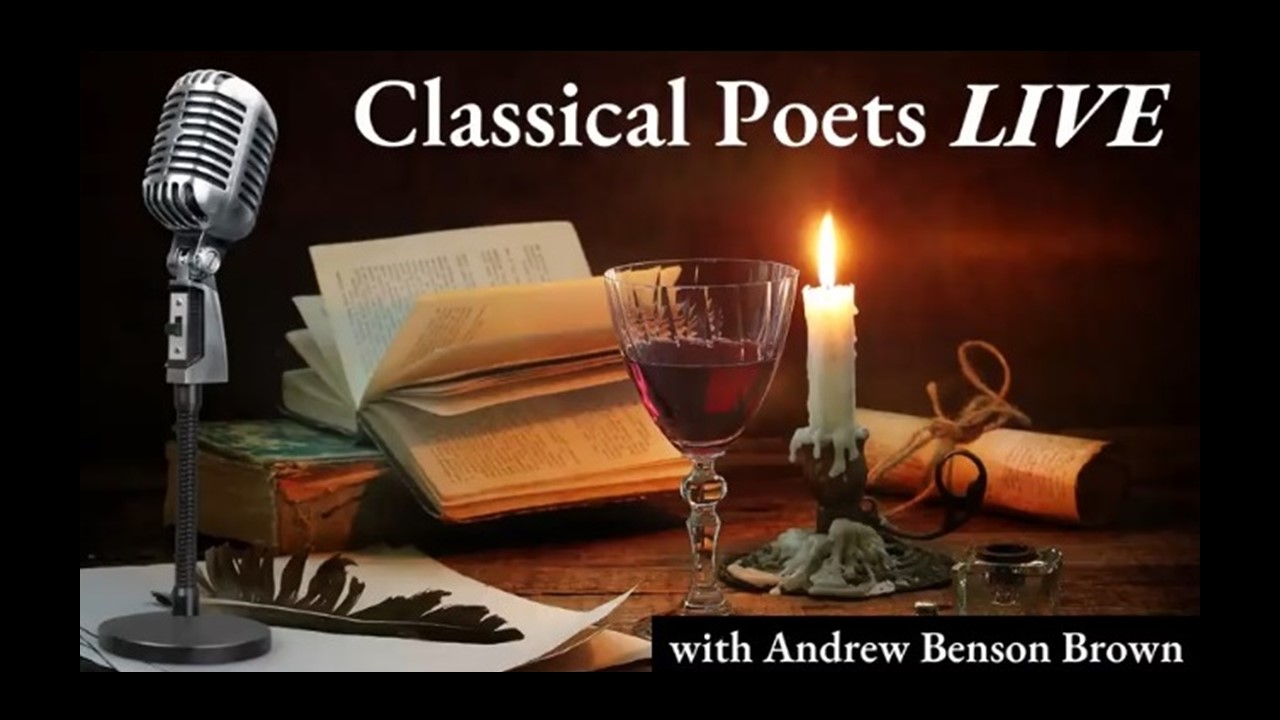.
I. The Blacksmith God Forges Scenes on Achilles’ Shield
after Homer’s Iliad Book 18
The hammer strikes! And glowing sparks fly out
As Earth takes shape and then the flowing seas,
The sun, the moon, the wondrous Pleiades
And all the constellations round about.
The hammer strikes! And now the god makes cities,
Also countryside where joy and sadness
Battle back and forth: war’s bloody madness
Here and there a farmer sings sweet ditties.
Then crowning all of man’s experience,
He forges dance—the gracefulness and skill
Of matching inner art with muscles’ will
To spin and leap with poised exuberance.
This gem of civilization now in place,
His gift is taken to the human race.
.
.
II. The Ark of God Enters Jerusalem
after the Second Book of Samuel Chapter 6
Excitement fills the city as the Ark
of God arrives. This golden chest contains
The Laws—those Moses earlier obtains—
And such a weighty moment can’t but spark
King David to commence ecstatic dance
And summon music paying homage to
The workings of the faith he knows is true.
His limbs rise up and move in rhythm’s trance.
The last king’s daughter sees and says with spiteful
jealousy, “Are you a king or servant?
Have you no shame to leap about so fervent?”
But David is unfazed—his praise is rightful.
For God will punish her with barrenness
And show dance is a proper way to bless.
.
.
III. One Evening at the Palace of Versailles
March, 1661
Disappointment clouds the Sun King’s heart,
Obscuring heavenly frescos and palace walls;
It dulls his fountains’ crystal waterfalls
And casts strange shapes on sculpted garden art.
The Hall of Mirrors seems to trap the soul
Instead of helping to expand its view.
His whisper flies on wings, “This can’t be true”;
He mourns each dancer who can’t play the role
Of Christian king nor highborn nobleman
Nor awe the crowds in any public place
Because—although they dance with noble grace
On Versailles’s stage—they are but common men.
Then crash! A bolt illuminates the hall.
“I’ll make a ballet school and show them all.”
.
.
IV. Shen Yun Performs at the Detroit Opera House
October, 2021
Through haunted streets abandoned by the past
They come, dressed well and driving gleaming cars
Avoiding spots that drug-fueled crime still mars;
Then make it to the opera house at last.
They find their seats and watch the curtain rise,
Revealing maidens flowing as if one
Big piece of wind-whisked silk, and men who run
And boldly leap to fly before the eyes.
They bring to life the legends, far off cultures,
That inspire, bewilder, and delight
And tell the tale of China’s current plight:
Traditions once divine rescued from vultures,
Wolves, and statists long deranged. The crowd
Can sense there’s hope, applauding long and loud.
.
.
Evan Mantyk teaches literature and history in New York and is President of the Society of Classical Poets.















Lovely descriptions of the magic of dance, Evan! My favorite line, though sad in its poignance, is “Through haunted streets abandoned by the past”. And there are many others, like “matching inner art with muscles’ will”; and the metaphor of the Sun King’s disappointment as a cloud, with your descriptions of all of the scenery clouded by it.
Enjoyed all four! Thank you, Evan.
Dance, as William Butler Yeats knew, is one of the strongest symbols of human creative energy, of desire, and of the sheer superabundant force of life. I think of his lines about Solomon, whom “Sheba led a-dance,” or the leaping movement of “that dolphin-torn, that gong-tormented sea.”
Note that Mr. Mantyk’s four poems are presented as historical stages: the ancient world in Hephaistos making the shield of Achilleus; the biblical world in the Ark of the Covenant; the post-Renaissance world in the Sun King’s Versailles; and the modern world, with the hopeful revival of parts of China’s ancient heritage.
These are serious and historically rooted poems.
What a great thematic romp through a wide spread of human history and culture! I like how it’s all woven together, literally dancing around the central theme in graceful harmony like a world fair exhibition.
My favorite rhyme which entertains my mind is “villain” with “bearing children”.
Thanks for the reads, Evan.
I read in reverse order. The middle of the 4th sonnet brought to mind the exuberant dance scene in A Christmas Carol at Fezziwig’s shindig, one of my favourite scenes in literature.
Evan, what a delightful and intriguing offering of sonnets! Each of these poems is a stunning representation of a different period in history and your ability to evoke each era with language is pure magic. Of the four, my favorite is “The Ark of God” with its depictions of David’s ecstacy and humility in stark contrast to Michal’s scornful pride. The rhymes of “fervent” and “servant” work so well in this context. I also greatly enjoyed “Palace at Versailles” and the slightly wry humor that informs the Sun King’s character. So many good images and rhymes in all of these poems, (“vultures” and “cultures” in Shen Yun is just fantastic!)
As for form, I am intrigued, All four of these are sonnets but in a form I did not recognize – abbacddceffegg (the first poem repeats the b rhyme instead of the new c rhyme, but I’m not sure that switch is consequential.) A poetry site Mr. Google referred me to calls this a “Hybrid” Sonnet form as between Italian and English. Is that right? More to the point, what I take away from your choice to use the same atypical rhyme scheme in all four poems is that you have offered a subtle structural metaphor for the continuity of dance throughout history. Every age is different. But every age is the same. The effect is absolutely stunning. Thank you for a quite wonderful read.
The ABBA rhyme scheme is typical in the Petrarchan sonnet, but it is not as common in English quatrains. The Italian language rhymes very easily, but English does not, and therefore the ABBA scheme is harder to manage successfully in our poetry, since it tends to throw the reader off somewhat. I always advise my students to stick with ABAB quatrains when learning to write the sonnet. You need much experience and skill to handle the ABBA scheme.
Very interesting. Thank you, Joseph, for the rhyme scheme insight.
Curiously, this sonnet form was what I was taught in high school when I was first introduced to formal poetry. I naively wrote sonnets in this form for thirty years before adopting the Shakespearean form as my default. I’m not convinced that the abbacddceffegg format is any more or less challenging that Shakespearean but I still revert to it from time to time with what I believe is good effect. Petrarchan is, of course, most challenging for reasons Dr. S. explains. SCPs Peter Harley had mastered a particularly challenging variation on the Petrarchan form (which concludes with a couplet) and rarely strays from it. Quite a feat.
As for Evan’s dance sonnets, my favorite is the final effort. The form is perfect and the content, powerful–especially in the final six lines.
As abab cdcd efef gg is simply the standard Shakespearean sonnet rhyme scheme, the scheme we see here (abba cddc effe gg) can be called the Shakespearean sonnet rhyme scheme with closed quatrains.
Very fine writing; I like the panoramic sweep of this as myths and world history focus on one point of interest: the dance, a cosmic concept as Dante, for one, clearly shows! Thanks!
Evan – a great pleasure it was to read this quartet, ranging as it does from the world of the Ancient Greek to the Old Testament, thence to the Sun King’s Versailles and on to present-day China, and the four disparate ages all united by a consistent rhyme scheme. There are many little felicities in the writing, and if I could single one out it would be, “Revealing maidens flowing as if one / Big piece of wind-whisked silk.” But there are many more. Well done!
Quite an ambitious undertaking. My favorites are I. and IV. The totality of the poems stirred my imagination to wonder when & where the first attempts at dance occurred.
Wonderful — wonder full — amazing the way the internal spirit moves the human body to express what wells inside with joyful gesture.
Like a march of time as well, one after the other, coming forward. The spark of life given traction in dance.
None can stand against the power of dance and its inborn (and high born) exuberance.
Well done, Evan.
All of these were well conceived and well executed. If I have a single quibble it is with the use of “make” in the last line of #3. Wouldn’t “build” or “start” be more to the point (and more idiomatic), depending on whether you mean “ballet school” as a building or an institution?
Thank you all for you comments!
To C.B. Anderson, the language here is bounded by the history. Louis XIV (the Sun King) did a lot of building at Versailles, but he did not “build” a dance school. Also “start a ballet school” suggests that there were other ballet schools and he was perhaps opening a local branch. Louis XIV was creating the very first ballet school: the Royal Academy of Dance.
When you put it that way, “make” makes perfect sense.
Evan, I am sorry to have taken so long to respond to this wonderful group. It is most interesting to see that the lame Hephaistos is credited with the invention of dance. The Versailles sonnet, with the idea that there should be a school of dance, takes an equally important step in the history of the art. Catherine de Medici had created very significant ballets, but they were all the court dances of varied individuals who were not professionals in the modern sense of educated artists. That first French school advanced the art of dance into its future. And now Shen Yun creates its truly amazing performances with the cooperation of dancers, musicians, costumers, and set designers who live and work closely together to present stories to which all of them are devoted.
Thank you, Margaret, for your insightful commentary! The irony of the lame god creating dance is interesting, though I didn’t intend that HE made it himself; only that dance is a gift from Heaven and that this ancient passage symbolizes that concept well.